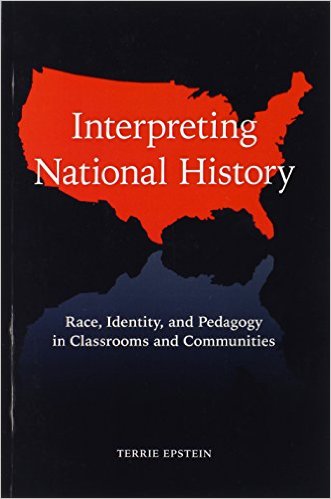How Young People’s Social Identities Influence Their Understandings of National History (Terrie Epstein)

I have always been interested in educational equity and how issues of equity play out in the teaching and learning of history. In the 1980s, I served as Chair of the Committee on Teaching for the Organization of American Historians (OAH). At the time, the United States was engaged in one of many “history wars” and the OAH planned to weigh in on the controversy. Mary Berry, the President of the OAH at the time, was an African American historian of African American history. At a meeting, she made one simple comment that shaped my research for the next two decades. “Black and brown kids,” Dr. Berry asserted, “don’t believe the textbook.”
Dr. Berry’s comments got me started on a project to evaluate how young people’s racial identities influenced their understandings of national history. With the assistance of a doctoral student who came up with the idea of using pictures of historical actors and events to elicit young people’s understandings of national history, I completed a six-year ethnographic study of how U. S. history was taught and learned in one community with a 50% African American and 50% white population. What I found was both expected and surprising: African American children and adolescents saw racial violence and perennial exclusion from rights as themes that structured the nation’s history; white students attending the same classes had learned that racial inequality (but not violence) and the progressive expansion of rights encapsulated the nation’s past.
 I published my findings in the book Interpreting National History: Race, Identity and Pedagogy in Classrooms and Communities (Routledge 2009), and six years later, I believe that the book’s implications are still relevant. Scholars from across the globe are working on similar issues related to identity and history and consequently, we’ve learned a lot. Most studies have found that teachers and texts present “official” perspectives on the past, which leaves many students from non-majority populations disengaged and renders all students misinformed. For many reasons, teachers are hesitant to discuss inter-group violence and have received little training in doing so. Yet there are teachers who engage students in the challenging work of teaching and learning “difficult histories,” i.e., histories of inter-group violence and/or oppression where students identify with historical actors who oppressed, were oppressed or sat on the sidelines.
I published my findings in the book Interpreting National History: Race, Identity and Pedagogy in Classrooms and Communities (Routledge 2009), and six years later, I believe that the book’s implications are still relevant. Scholars from across the globe are working on similar issues related to identity and history and consequently, we’ve learned a lot. Most studies have found that teachers and texts present “official” perspectives on the past, which leaves many students from non-majority populations disengaged and renders all students misinformed. For many reasons, teachers are hesitant to discuss inter-group violence and have received little training in doing so. Yet there are teachers who engage students in the challenging work of teaching and learning “difficult histories,” i.e., histories of inter-group violence and/or oppression where students identify with historical actors who oppressed, were oppressed or sat on the sidelines.
After my book was published, I extended my research to examine how culturally responsive teachers shaped the historical narratives of low-income students of color. Like researchers doing similar work in different contexts (see Tsafrir Goldberg’s work on Israeli and Palestinian adolescents), I found mixed results: students were integrated into the teaching of historical perspectives regarding the historical agency of people of color, something that they rarely mentioned at the beginning of the school year. At the same time, students had difficulty accepting instruction about groups of white people as oppressed and/or as allies of people of color. Overall, this research suggests that it is more difficult to challenge students’ negative conceptions of “the other” than it is to positively influence their views of historical actors with whom they identify.
Thanks to a Fulbright grant in 2013, I investigated similar issues in New Zealand with my colleagues Mark Sheehan and Michael Harcourt. Preliminary analyses indicate that there are significant differences in Maori (indigenous) and Pakeha (New Zealanders of European descent) adolescents’ historical views. In discussing the significance of the Treaty of Waitangi, New Zealand’s founding document, Maori students were much more likely than Pakeha to refer to conflict or violence. And despite national discourses about the Treaty’s status as the nation’s founding document, both groups of students believed that it was significant to Maoris but not to Pakehas or other New Zealanders.
Most recently, Carla Peck (University of Alberta) and I received an AERA grant to organize an international conference on teaching and learning difficult histories. Held in June 2015, the conference included 16 history education researchers from across the globe, including Peter Seixas, University of British Columbia, and Jennifer Tinkham, Acadia University. Carla and I are working on an edited book based on the conference papers.
While we have learned a lot about how young people’s identities influence their understandings of national history, there is still much room for exploration. What roles do ethics and emotions play in the teaching and learning of difficult histories? How can teachers and texts present more inclusive historical narratives and foster discussions across difference? I look forward to learning more about these topics as our field continues to grow.
- Se connecter ou créer un compte pour soumettre des commentaires
- Français

